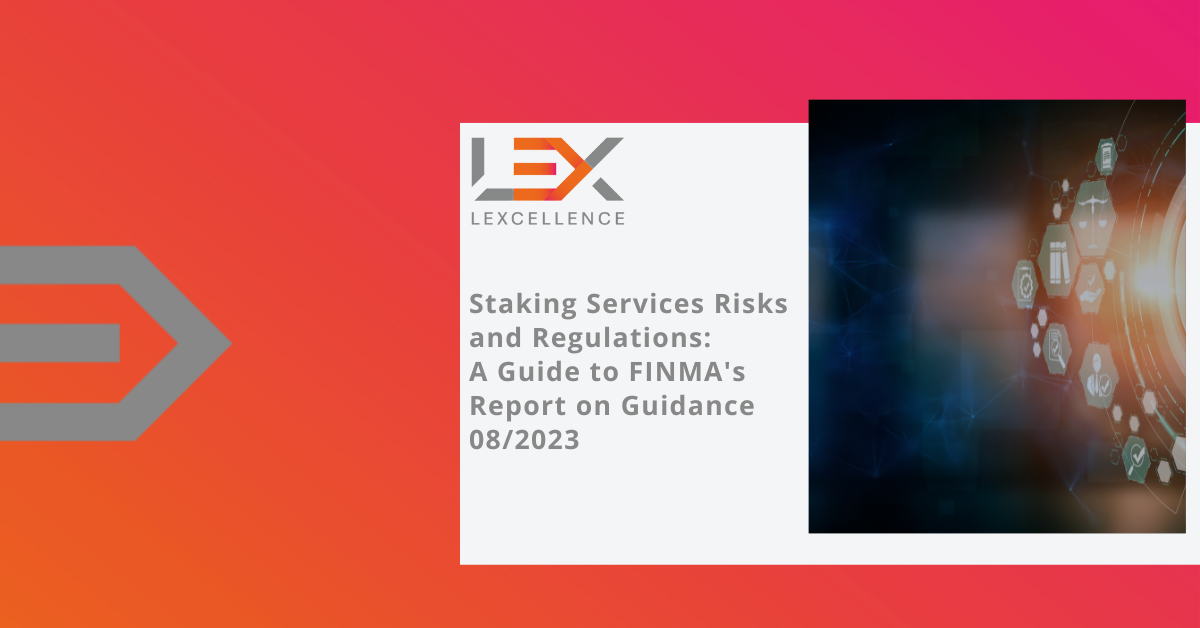Staking Services Risks and Regulations: A Guide to FINMA's Report on Guidance 08/2023

The Swiss Financial Market Supervisory Authority (FINMA) recently issued FINMA Guidance 08/2023, outlining its expectations for the licensing and supervision of staking services, crypto asset businesses in Switzerland. This guidance, released on December 20, 2023, marks a significant development in the Swiss regulatory landscape for the burgeoning crypto asset industry. DLT Act safeguards cryptoassets in custody during bankruptcy. As staking gains prominence, FINMA addresses rules, emphasizing distinctions to protect assets in bankruptcy and clarifying licensing and capital requirements.
In the dynamic landscape of blockchain technology, the practice of staking has gained prominence, introducing a myriad of legal and operational intricacies. The Financial Market Supervisory Authority (FINMA) provides comprehensive guidance, shedding light on the nuances associated with staking, its variants, and the risks inherent in this evolving ecosystem.
Understanding Staking:
Staking is essentially the process of locking native cryptoassets at a validator node's staking address to participate in blockchain validation, primarily utilizing a proof-of-stake consensus mechanism. Participants engage in staking to earn rewards, and the process varies across blockchains. Notably, the inverse process of unstaking can involve a lock-up/exit period, introducing complexities such as delayed returns and potential penalties like "slashing" for misconduct by validator nodes.
Variants of Staking:
The FINMA guidance distinguishes between custodial and non-custodial staking. Custodial staking involves customers transferring cryptoassets to a third party, further categorized into direct staking and staking chains. In direct staking, service providers operate validator nodes and retain withdrawal keys, while staking chains involve passing cryptoassets to other institutions operating validator nodes. Non-custodial staking, on the other hand, allows customers exclusive control over withdrawal keys, eliminating the involvement of third parties.
Identified Risks:
Staking carries inherent risks, ranging from technical malfunctions to counterparty uncertainties and market volatility. Technical risks include malfunctions in the staking process and the potential for slashing due to validator node misconduct. Counterparty risk arises from unclear legal positions in the event of bankruptcy, especially if custody or staking is delegated to entities outside Switzerland. Market risk is associated with the difficulty of selling staked cryptoassets in a volatile market, exacerbated by lock-up periods during the unstaking process.
Supervisory Treatment:
The guidance delves into the legal basis for the custody of cryptoassets, emphasizing the requirements set by the DLT Act. Legal consequences for staking vary based on whether the institution is licensed or unlicensed. For licensed institutions, including banking entities, the document differentiates between staking chain and direct staking scenarios.
Staking by Licensed Institutions:
In the case of staking chain delegation to a third party, licensed institutions must adhere to specific criteria, including establishing a fiduciary relationship. For direct staking, where the institution operates the validator node, legal uncertainties prevail. FINMA, acknowledging this ambiguity, temporarily refrains from imposing capital requirements for staked cryptoassets, provided stringent conditions are met.
Staking by Unlicensed Market Participants:
Unlicensed market participants engaging in custodial direct staking may not require a banking license, contingent on compliance with set conditions and the absence of contradictory legal developments. Adherence to anti-money laundering regulations is obligatory.
Glossary:
The document concludes with a glossary elucidating technical terms, recognizing the evolving nature of staking-related terminology.
Staking Risks: Technical, Counterparty, and Market Challenges for Investors
Investors in staking face technical risks (malfunctions, slashing), counterparty risks (unclear legal position, heightened if staking is abroad), and market risks (selling delays in volatile markets due to lock-up periods).
FINMA's guidance is a crucial step towards creating a framework for navigating the complex terrain of staking. As the crypto landscape evolves, these guidelines provide clarity and set the stage for further regulatory developments, ensuring a balance between innovation and investor protection.
Source:
https://www.finma.ch/en/news/2023/12/20231220-meldung-am-staking/





